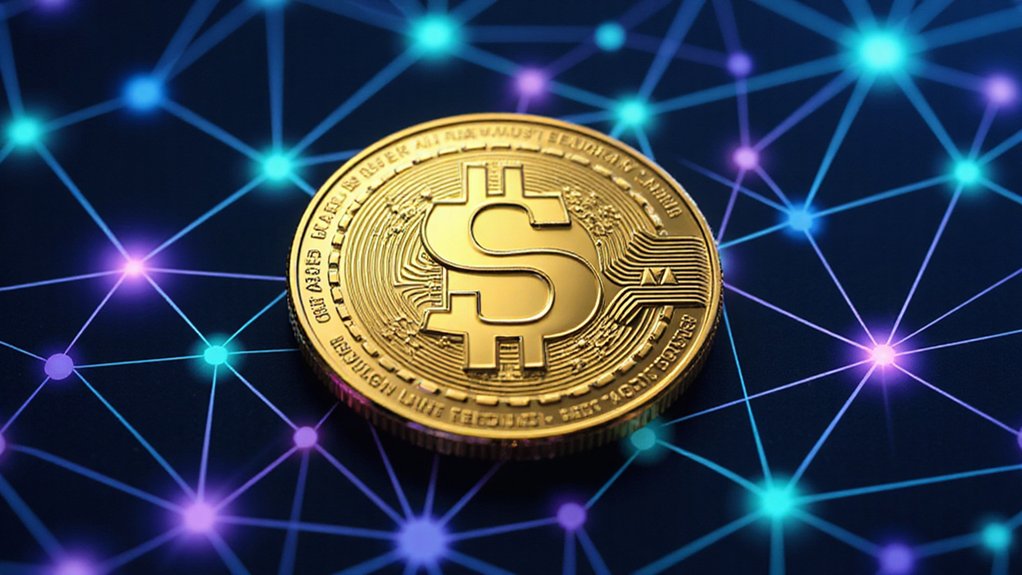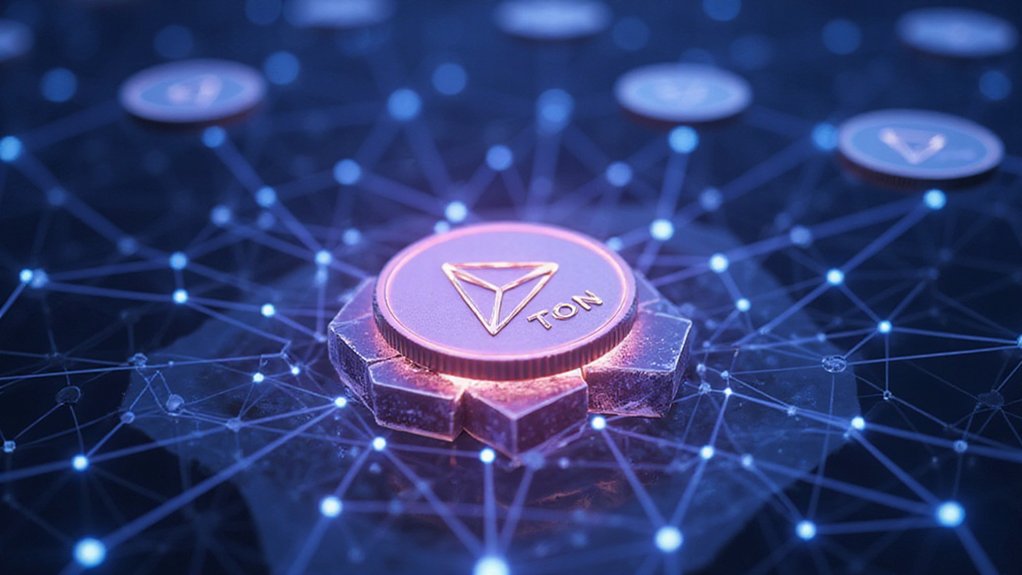SOL is the native cryptocurrency of Solana, a high-performance blockchain launched in 2020 that processes thousands of transactions per second. Its innovative dual consensus mechanism—combining Proof-of-History with Proof-of-Stake—enables remarkable 400-millisecond block times while maintaining security. The token facilitates minuscule transaction fees (under $0.0025), governance participation, and validator staking. Solana’s architecture attracts developers building DeFi protocols, NFT marketplaces, and gaming platforms that require consistent throughput without the congestion plaguing earlier implementations.

Solana (SOL) stands as a formidable contender in the cryptocurrency ecosystem, distinguished by its remarkable transaction throughput—processing an impressive 2,000 to 3,000 transactions per second—and innovative dual-consensus mechanism.
This blockchain protocol, launched in 2020 after three years of development under Anatoly Yakovenko and colleagues, employs a tandem of Proof-of-History (PoH) and Proof-of-Stake (PoS) methodologies that, quite innovatively, circumvent the congestion plaguing many predecessors in the digital asset space.
Solana’s revolutionary PoH and PoS combination elegantly solves blockchain congestion issues that hindered earlier digital asset platforms.
The native SOL token serves multiple functions within this ecosystem—facilitating transaction fees (at less than $0.0025 per transaction, one might wonder how network maintenance remains economically viable), enabling governance participation, and providing the stake necessary for validators to secure the network.
These validators, staking their SOL holdings, perform the critical function of transaction validation while maintaining the integrity of the blockchain’s distributed ledger.
Solana’s architecture delivers remarkable efficiencies through its PoH mechanism, which timestamps transactions before validation—effectively creating a historical record that streamlines processing.
This temporal sequencing, coupled with the security guarantees of PoS validation, yields a blockchain environment particularly hospitable to applications requiring high throughput and minimal latency.
The platform has consequently attracted a diverse ecosystem of decentralized applications spanning DeFi protocols (where, significantly, real-time trading becomes feasible rather than aspirational), NFT marketplaces capitalizing on low minting costs, and gaming platforms requiring consistent performance. Solana also powers popular DeFi platforms like Raydium AMM, which combines Solana’s speed with automated market making capabilities for fast, low-cost trading experiences. Recent network performance metrics show the blockchain maintains block times of 400 milliseconds, further enhancing its reputation for speed. The ecosystem benefits from the SPL Token standard, similar to Ethereum’s ERC-20, enabling streamlined tokenization across the network.
Developers have flocked to Solana’s infrastructure, recognizing its capacity to support applications that would otherwise suffer from prohibitive gas fees or transaction delays on alternative networks.
Solana’s emphasis on scalability addresses one of blockchain technology’s most persistent challenges—the trilemma of balancing security, decentralization, and scalability without significant compromise.
While no blockchain has definitively solved this conundrum, Solana’s approach offers a compelling proposition: that transaction speed need not come at the expense of network integrity or prohibitive costs.
Such efficiency positions SOL as a significant player in the evolving cryptocurrency landscape.
Frequently Asked Questions
How Do I Store SOL Tokens Safely?
Safely storing SOL tokens requires a multi-layered security approach.
Users should employ hardware wallets like Ledger for maximum protection (cold storage being preferable to hot wallets—naturally).
Software options from Coinbase or Brave offer convenience, albeit with inherent vulnerabilities.
Regardless of wallet choice, proper private key management remains paramount; one might almost call it the sine qua non of crypto security.
Regular software updates and thorough backup procedures round out this essential defensive strategy.
Can SOL Be Mined Like Bitcoin?
No, Solana cannot be mined like Bitcoin.
While Bitcoin employs a resource-intensive Proof of Work mechanism (requiring miners to solve complex mathematical puzzles), Solana utilizes a hybrid consensus model combining Proof of Stake and Proof of History.
This architecture—elegant in its efficiency—eliminates traditional mining altogether.
Instead, participants can stake their SOL tokens to validators or become validators themselves, earning rewards through network participation rather than computational competition.
The approach yields remarkable transaction speeds without mining’s notorious energy consumption.
What Affects Solana’s Price Volatility?
Solana’s price volatility stems from multiple interconnected factors.
Market conditions—particularly bear market dynamics and shifting investor sentiment—create significant price fluctuations.
Technological challenges, including network outages, directly impact trust and valuation.
The broader macroeconomic landscape, from inflation concerns to dollar strength, exerts considerable pressure.
Meanwhile, regulatory developments (potential ETF approvals or compliance hurdles) introduce another layer of uncertainty.
Competition from chains like Ethereum further complicates Solana’s price stability, creating a perfect storm of volatility factors.
How Does Sol’s Energy Consumption Compare to Other Cryptocurrencies?
Solana’s energy consumption stands as a paragon of efficiency in the cryptocurrency landscape, consuming a mere 3.2 million kWh annually—equivalent to about 986 American households.
At 0.0067 Wh per transaction, SOL dwarfs Bitcoin’s country-sized energy footprint and even outperforms fellow PoS blockchain Cardano (6 GWh annually).
This remarkable efficiency stems from its hybrid Proof of History/Proof of Stake consensus mechanism, which eliminates the energy-intensive mining puzzles that plague traditional PoW systems like Bitcoin.
What Are the Tax Implications of Trading SOL?
Trading SOL entails significant tax considerations.
The cryptocurrency is classified as property, subjecting transactions to capital gains tax—lower rates for holdings exceeding one year, higher for shorter periods.
Staking rewards and payments received in SOL constitute taxable income at fair market value.
Savvy investors utilize specialized tax software and strategic tax-loss harvesting to mitigate liabilities.
Jurisdictional variations necessitate location-specific guidance, while meticulous record-keeping remains essential for compliance (lest one fancy an audit-induced migraine).









